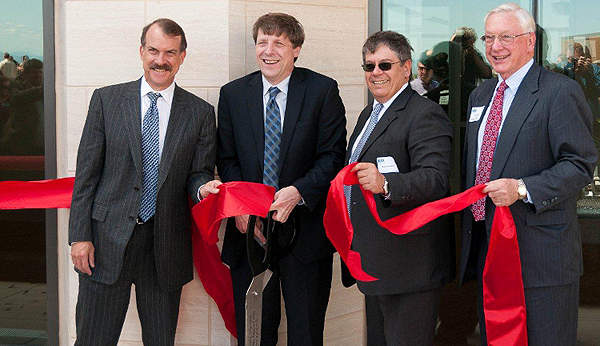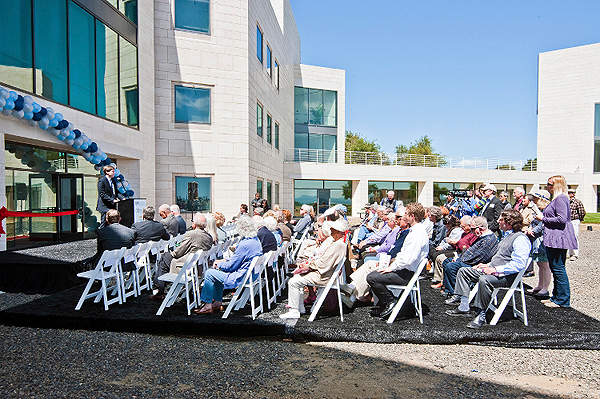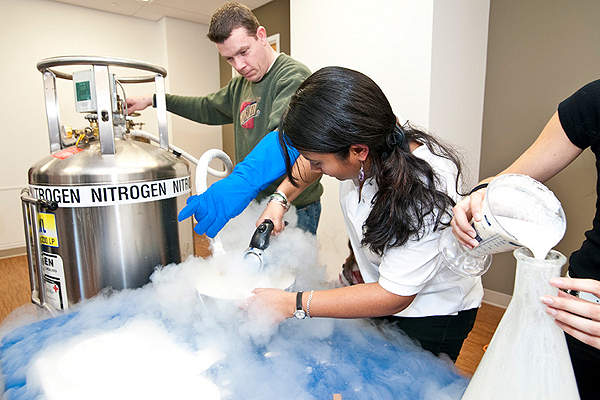The New Regenerative Medicine Research Center in California was opened on 14 April 2012. It is a biomedical research facility which focuses on how the regeneration of human cells and tissues can be used for treating fatal diseases and conditions, such as Parkinson’s, Alzheimer’s, strokes and diabetes in older people. It is located in Novato in California, USA.
The Buck Institute for Research on Aging and the California Institute for Regenerative Medicine (CIRM) sponsored the facility.
The Novato facility is the third research facility of the Buck Institute. Its construction started in March 2010 and took nearly two years to reach completion.
Details of the Novato-based biomedical research facility and labs present
The research facility is spread over a 488-acre campus in Novato at a three-storey building, with more than 65,708 square feet of space. It was constructed at a cost of $36.5m.
The facility has 12 laboratories and has the equipment needed for developing treatments for age-related conditions such as Parkinson’s, cardiovascular problems, cancer, macular degeneration, strokes and Alzheimer’s disease, by focusing the research on various stem cell technologies.
The facility is primarily engaged in researching and developing regenerative medicines, which include naturally stimulating the damaged organs, cells and tissues in the body for healing, to develop cells, organs and tissues in the laboratory and implant them in to the human body, as well as to eliminate the rejection of transplanted organs in the body.
The other medical research which is currently being conducted at the facility includes Parkinson’s disease research at the Andersen laboratory, finding causes of breast cancer at the Benz laboratory, plus stem cell therapies research at the Campisi laboratory.
Research is also being conducted on replacing the brain cells lost from Huntington’s disease at the Ellerby laboratory and restoring the functions of the brain following strokes at Greenberg laboratory.
Construction of California’s regenerative medicine research centre
The research facility broke ground in March 2010 and was constructed during three phases. In the first phase of construction, earthworks and site grading were completed. In phase II the building’s structural construction was completed, while in the third phase finishing and installation works were completed.
Buckle restrained brace frames (BRBF) were used in the construction to allow the building survive during a seismic event.
Travertine limestone from Italy was used for the construction of the façade of the building. More than 250 precast foot panels with thickness of eight inches were attached to the steel.
Contractors involved in constructing the Buck Institute’s third facility
Three major contractors and 92 subcontractors were hired for the building’s construction.
The design for the building was provided by Perkins+Will architecture. Rutherford & Chekene, a structural engineering company, provided the building frame. IM Pei provided the original master plan for the Buck Institute campus.
Phase I construction was awarded to North Bay Construction. A phase II construction contract worth $17m was awarded to a joint venture consisting of Cahill Contractors and Otto Construction. Kitchell Corporation completed the core and shell work in phase II.
CSW/Stuber-Stroeh and the Miller Pacific Engineering Group provided civil engineering and design consulting services for phase II construction. The pre-construction services were provided by Ghilotti Construction.
Kitchell Corporation was the general contractor for phase III construction. Alfa Tech Cambridge provided a HVAC system design for the building.
Peterson Mechanical provided plumbing and low-flow fixtures installation. The electrical systems were provided by Northern Electric and W Bradley Electric (WBE). Alcal-Arcade supplied roofing, waterproofing, insulation and glazing. Shamrock Materials supplied concrete for foundations and decks. The heating and cooling heat pump and thermal recovery systems were provided by ClimaCool. Clark Pacific provided raw stone cutting, polishing and bonding of rocks to concrete.
Finances for the project from the CIRM and Buck Institute
The original cost of the project was projected to be $41m in 2008, but due to the effective construction methods adopted by the contractor, the actual cost of the project came down to $36.5m. It was financed by the California Institute of Regenerative Medicine (CIRM) with $20.5m, while Buck Institute contributed $16m.






